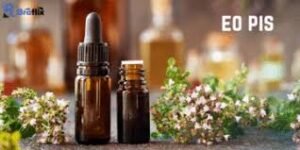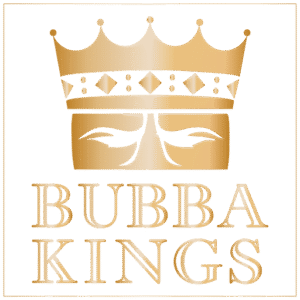Pappedeckel – A Complete Guide to the Humble Cardboard Lid
When you hear the word Pappedeckel, you might picture a simple cardboard lid sitting on top of a coffee cup, a coaster under a glass of beer, or the cover of a takeaway food container. At first glance, it doesn’t look like much. But this small, lightweight item has a fascinating story, deep cultural roots in Germany, and growing importance in today’s eco-conscious world.
In this article, we’ll explore the history, types, uses, sustainability benefits, cultural significance, and future innovations of the Pappedeckel. By the end, you’ll understand why this humble cardboard lid deserves more attention than it usually gets.
What is a Pappedeckel?
The German word Pappedeckel literally translates to “cardboard lid” or “cardboard cover.” It refers to any lid, cover, or coaster made from cardboard or thick paperboard. Although it’s a simple invention, the Pappedeckel plays multiple roles:
- Practical: It protects food and drinks.
- Sustainable: It replaces harmful plastics.
- Cultural: It is now ingrained in German beer customs.
- Creative: It serves as a branding and marketing tool.
In English, people often call it a cardboard lid, cardboard cover, or cardboard coaster, depending on its use.
The History of the Pappedeckel
The invention of cardboard in the 19th century opened the door to new packaging solutions. Germany, with its rich beer culture and emphasis on practical design, quickly adopted cardboard for coasters and drink covers.
By the late 1800s, beer coasters made of cardboard had become standard in German pubs. They weren’t just for protecting tables they were multifunctional. Customers would use them to:
- Keep bugs out of their beer by placing the coaster on top of the glass.
- Signal to bartenders that they didn’t want a refill by covering the drink.
- Write notes, play games, or keep score during card games.
Over the years, the Pappedeckel expanded from beer coasters to coffee lids, food packaging, and even creative advertising spaces.
Types of Pappedeckel
The beauty of the Pappedeckel lies in its versatility. Here are the most common types:
1. Coffee Cup Pappedeckel
Every coffee lover is familiar with the cardboard lid on takeaway cups. A coffee cup Pappedeckel serves three main purposes:
- Prevents spills when walking or driving.
- Keeps drinks warmer for longer.
- Protects your hands from accidental burns.
As more cities ban single-use plastics, eco-friendly cardboard coffee lids are becoming the norm.
2. Bottle and Glass Pappedeckel
In German beer gardens, the Pappedeckel is a tradition. It’s used as both a coaster under the glass and a cover on top of the glass. These cardboard lids are cheap, easy to print on, and biodegradable.
They are also:
- Used for branding beer brands and breweries.
- Handy for writing orders or keeping track of rounds.
- A fun part of drinking culture, often decorated with witty designs.
3. Food Container Pappedeckel
Fast food, takeaway meals, and delivery services depend heavily on Pappedeckel. From burger boxes to noodle bowls, cardboard lids are everywhere.
They are popular because:
- They are sturdy and lightweight.
- They keep food warm without condensation.
- They are stackable for easy transport.
Comparison: Pappedeckel vs Plastic Lids
| Feature | Pappedeckel (Cardboard) | Plastic Lid |
| Eco-Friendly | Biodegradable | Non-biodegradable |
| Branding | Printable | Limited |
| Durability | Good for most foods | Better for liquids |
| Cost | Moderate | Often cheaper short-term |
Why Pappedeckel Matters Today
The Pappedeckel is now more than just a coaster or lid; it is a representation of environmentally friendly packaging. In a time when consumers demand sustainable choices, cardboard lids have become more than a practical necessity.
Benefits for Businesses
- Branding opportunities with custom-printed designs.
- A greener image that attracts eco-minded customers.
- Compliance with environmental regulations.
Benefits for Consumers
- Safer packaging free of harmful plastics.
- Easy to recycle or compost.
- A cleaner experience when enjoying food and drinks outdoors.
Pappedeckel and Sustainability
Sustainability is one of the strongest arguments for switching to cardboard lids.
Eco-Friendly Materials
Modern Pappedeckel are often made from:
- 100% recycled cardboard
- FSC-certified paperboard
- Plant-based coatings for water resistance
Reducing Plastic Waste
According to the European Environment Agency, single-use plastics are one of the biggest sources of packaging waste. Switching to Pappedeckel can cut plastic use by up to 30% in urban food services.
Recycling and Reusability
- Paper recycling bins can accept the majority of cardboard lids.
- Some are fully compostable within a few months.
- Creative reuses include coasters, crafts, and even seedling starters for plants.
Creative Uses of Pappedeckel Beyond Packaging
One reason Pappedeckel remains popular is its versatility. Beyond food and drink, it has many unexpected uses:
- DIY Crafts: Kids’ projects, holiday ornaments, or small decorations.
- Event Branding: Personalized Pappedeckel for weddings, festivals, or company events.
- Marketing Tools: Many businesses print logos, slogans, or QR codes directly on the Pappedeckel.
Case Study: A Munich brewery printed QR codes on their Oktoberfest Pappedeckel, linking to their beer menu and special offers. Customers loved the interactive design, and the brewery saved on separate advertising costs.
Pappedeckel in German Culture
The Beer Coaster Tradition
In Germany, the beer coaster, known as Pappedeckel, transcends its role as mere packaging. It’s part of the social ritual of drinking beer. People still place it on top of their glasses to keep drinks safe or flip it over to show they want another round.
Language and Humor
In German slang, Pappedeckel is sometimes used humorously to describe something flimsy or unimportant. Phrases like “Das ist nur ein Pappedeckel” (“That’s just a cardboard lid”) highlight its everyday presence in speech.
Choosing the Right Pappedeckel for Your Business
If you’re a café, bar, or restaurant owner, the right Pappedeckel can set your business apart.
Factors to Consider
- Durability: Will it hold up against liquids and heat?
- Design: Can it be printed with your logo or message?
- Eco-Certifications: Is it FSC-certified or compostable?
- Cost: Is it affordable for bulk orders?
Tip: Many suppliers now offer customizable Pappedeckel with eco-friendly inks, making them both sustainable and visually appealing.
Future of Pappedeckel
The future of the Pappedeckel looks bright as industries innovate:
- Smart Packaging: QR codes and NFC chips for interactive customer experiences.
- Advanced Coatings: Waterproof yet compostable finishes.
- Lighter Materials: Stronger but thinner cardboard for reduced waste.
As sustainability continues to grow in importance, cardboard lids will likely replace plastics in many industries worldwide.
Frequently Asked Questions (FAQ) About Pappedeckel
Q: What does Pappedeckel mean in English?
A: It means “cardboard lid” or “cardboard cover.”
Q: Are Pappedeckel recyclable?
A: Yes, most are recyclable with paper waste.
Q: How long does a Pappedeckel take to decompose?
A: On average, 2–5 months depending on conditions.
Q: Can Pappedeckel replace plastic lids completely?
A: For many uses, yes. For liquids like soups, innovations are still being developed.
Q: Where can businesses buy Pappedeckel?
A: Numerous packaging suppliers across Europe and Asia provide environmentally friendly options along with bulk discounts.
Conclusion – Why the World Needs More Pappedeckel
The Pappedeckel may seem ordinary, but it’s a quiet hero of modern life. It keeps coffee hot, beer safe, and food fresh. It carries brand logos, cultural traditions, and now, the promise of a greener planet.
Choosing a cardboard lid over plastic is more than convenience it’s a conscious decision for sustainability. Whether in a bustling café, a lively beer garden, or a family takeaway night, the Pappedeckel proves that even the smallest packaging choice can make a big difference.
Next time you hold one in your hand, remember: it’s not just a lid. It’s a statement of eco-friendly living.














Post Comment